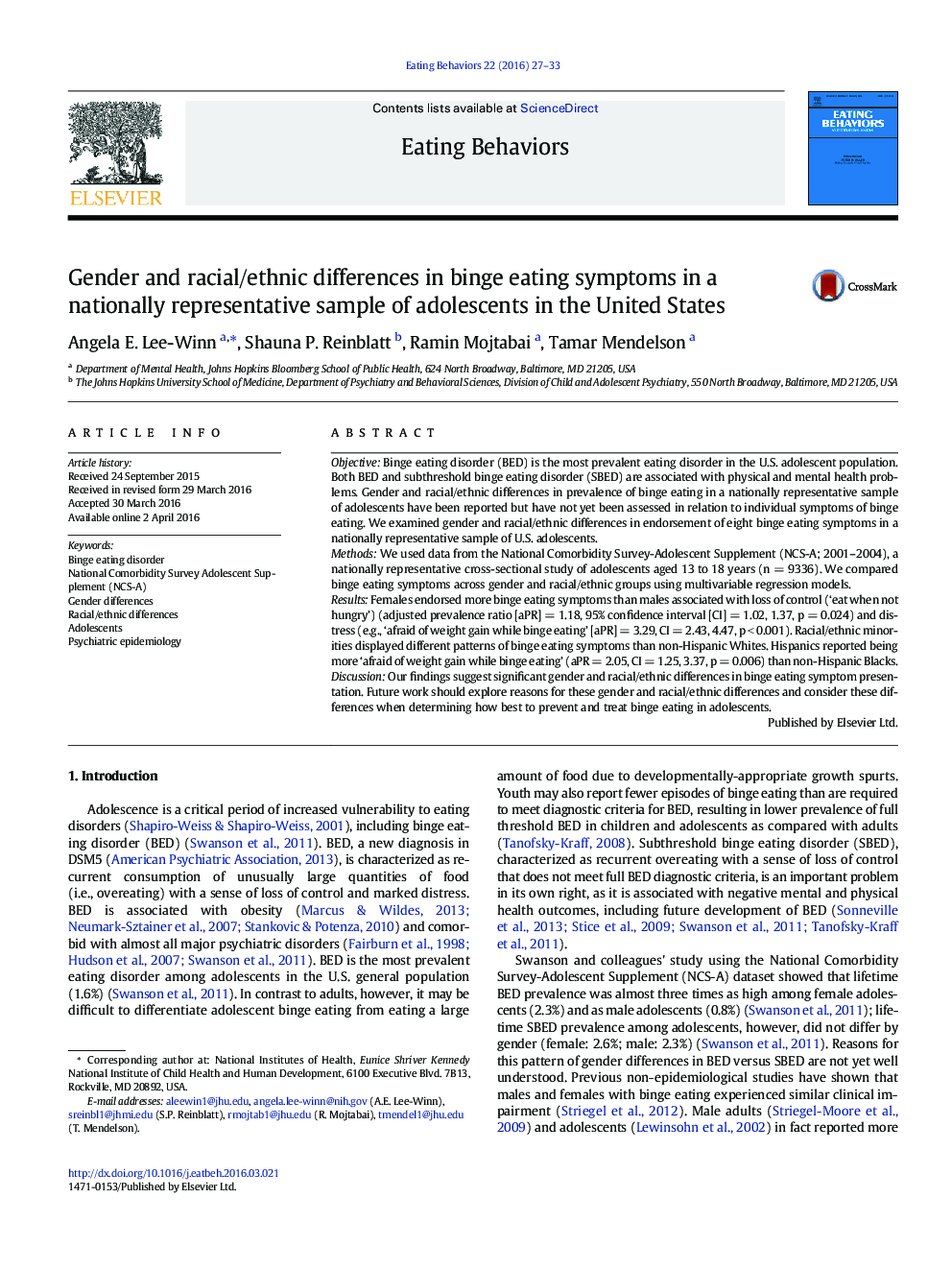| Article ID | Journal | Published Year | Pages | File Type |
|---|---|---|---|---|
| 906185 | Eating Behaviors | 2016 | 7 Pages |
•Female adolescents reported more loss of control and distress due to binge eating.•Males may experience and/or interpret binge eating differently than females.•Racial/ethnic minority adolescents showed different patterns of BED symptoms.•Non-Hispanic Blacks reported less distress than non-Hispanic Whites.•Hispanics reported more loss of control and distress than other race/ethnic groups.
ObjectiveBinge eating disorder (BED) is the most prevalent eating disorder in the U.S. adolescent population. Both BED and subthreshold binge eating disorder (SBED) are associated with physical and mental health problems. Gender and racial/ethnic differences in prevalence of binge eating in a nationally representative sample of adolescents have been reported but have not yet been assessed in relation to individual symptoms of binge eating. We examined gender and racial/ethnic differences in endorsement of eight binge eating symptoms in a nationally representative sample of U.S. adolescents.MethodsWe used data from the National Comorbidity Survey-Adolescent Supplement (NCS-A; 2001–2004), a nationally representative cross-sectional study of adolescents aged 13 to 18 years (n = 9336). We compared binge eating symptoms across gender and racial/ethnic groups using multivariable regression models.ResultsFemales endorsed more binge eating symptoms than males associated with loss of control (‘eat when not hungry’) (adjusted prevalence ratio [aPR] = 1.18, 95% confidence interval [CI] = 1.02, 1.37, p = 0.024) and distress (e.g., ‘afraid of weight gain while binge eating’ [aPR] = 3.29, CI = 2.43, 4.47, p < 0.001). Racial/ethnic minorities displayed different patterns of binge eating symptoms than non-Hispanic Whites. Hispanics reported being more ‘afraid of weight gain while binge eating’ (aPR = 2.05, CI = 1.25, 3.37, p = 0.006) than non-Hispanic Blacks.DiscussionOur findings suggest significant gender and racial/ethnic differences in binge eating symptom presentation. Future work should explore reasons for these gender and racial/ethnic differences and consider these differences when determining how best to prevent and treat binge eating in adolescents.
